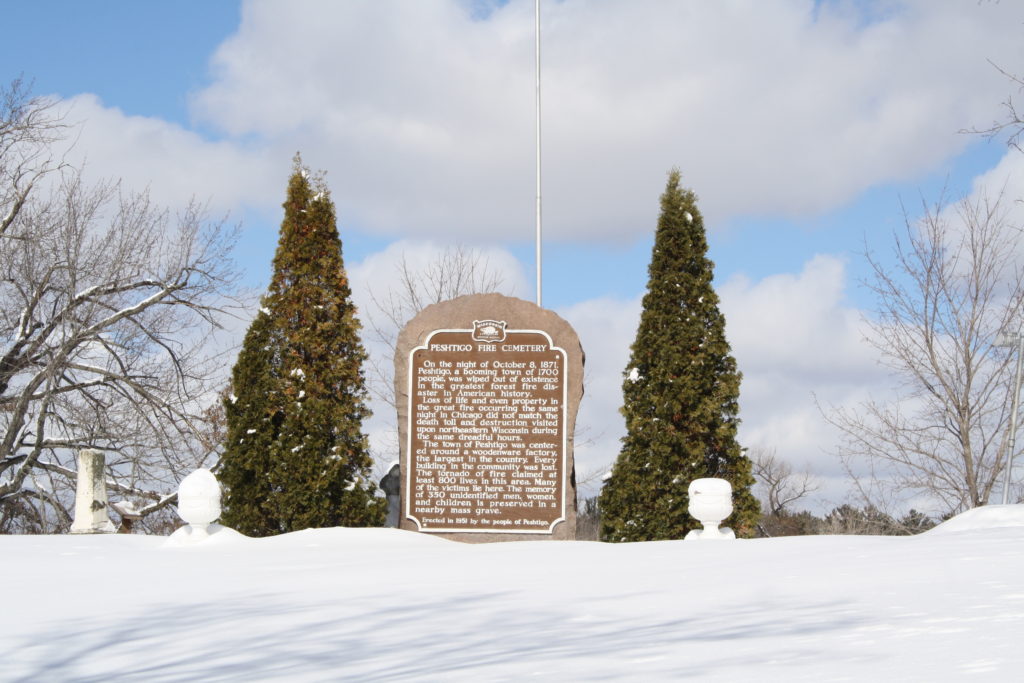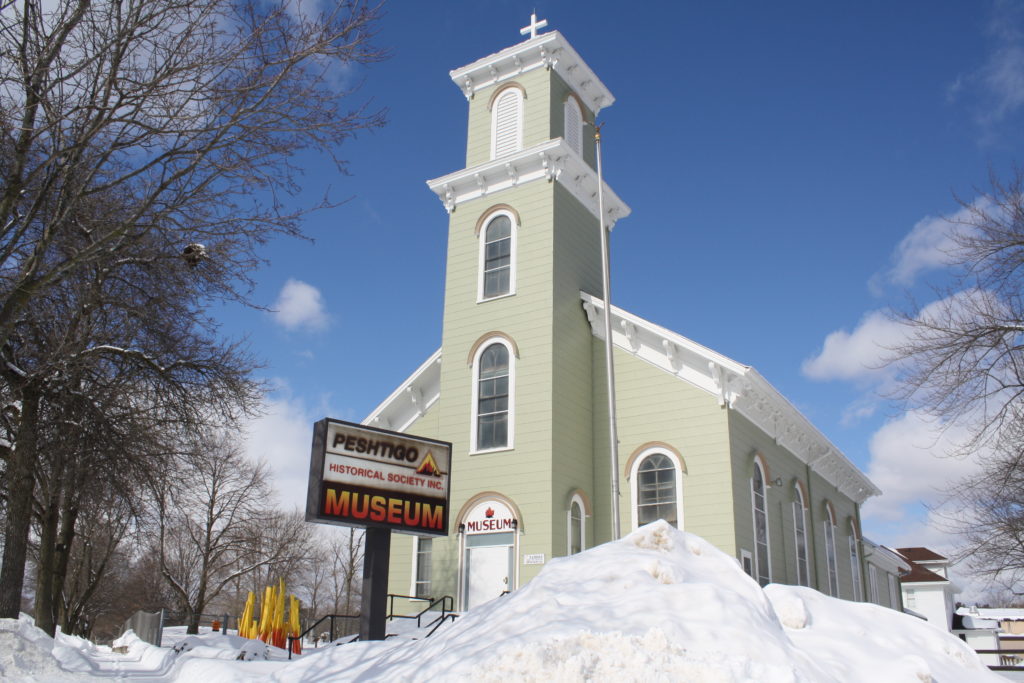“On the night of October 8, 1871, Peshtigo, a booming town of 1700 people, was wiped out of existence in the greatest forest fire disaster in American history,” a plaque at the Peshtigo Fire Cemetery reads.
“Loss of life and even property in the great fire occurring the same night in Chicago did not match the death toll and destruction visited upon northeastern Wisconsin during the same dreadful hours. The town of Peshtigo was centered around a woodenware factory, the largest in the country. Every building in the community was lost. The tornado of fire claimed at least 800 lives in this area. Many of the victims lie here. The memory of 350 unidentified men, women and children is preserved in a nearby mass grave.”

As stated on the plaque, wood products manufacturing in the area was the largest in the world. Notoriously flammable sawdust blanketed the town. With very casual use of fire during the 19th century, fires were very common. Sometimes the smoke was so bad that they had to close school, and sometimes it was so dark that one couldn’t see a friend from a block away.
In the fall of 1871, the citizens of Peshtigo had come to the end of a very long, dry summer. The driest in recent memory. On the evening of October 8, people had just finished fighting a fire downtown, where piles of sawdust had gone up in flames. Folks in the area were always worried about fires; they buried prized possessions to protect them in anticipation of a fire. Night came and the wind picked up. People reportedly heard the sound of a “freight train” and saw a red glow coming their way. The fire had already destroyed the west side of town.
“People ran into the river, bobbing up and down, because there was no way to fight it,” said Scott Knickelbine, author of The Great Peshtigo Fire: Stories and Science from America’s Deadliest Firestorm. “They couldn’t have their head out of the water for more than a minute before their heads started to burn.”
The few survivors of the Peshtigo Fire suffered from ailments like scorched lungs, pneumonia, among other things. It was a while before news was able to reach anyone, as the Great Chicago Fire happened on the same night. Ironically, the buildings that were burning in Chicago that night were made of wood from Peshtigo.
Initially, no one believed the stories. They simply refused to believe that “people burst into flames” and that there were “fire tornadoes” or that “metal burned in mid-air.” Later, fact finders found all claims to be true. The Peshtigo Fire has been mostly forgotten because almost no one survived, while the Chicago Fire is notorious because people lived to tell about it.

“It requires an eye witness to do it and even then one never can give an accurate account of what happened on that terrible night of the eight of October 1871,” Rev. Kurt R. F. Geyer wrote in the Peshtigo Times on October 6, 1921.
In Peshtigo, things changed so dramatically that the people who did not die decided to leave town. Business in the area collapsed, which led to a sharp decrease in economic vibrancy, to the point that it would have been irrelevant to rebuild the factories. It took a very long time for Peshtigo to come back.
“The occurrences of that dreadful night have never been accorded their proper place in the history of American disasters, primarily because Chicago’s ordeal was by its very nature more spectacular, more universally publicized, and more often revived in print,” according to Rev. Peter Pernin in a reproduced excerpt from the Wisconsin Magazine of History in 1971.
The Peshtigo Fire Museum and memorial cemetery is located on the site of the Catholic church that Father Pernin lost in the fire. The building is the first church rebuilt in Peshtigo after the fire.
Things have changed tremendously since 1871. Most recently, the Camp Fire, which now holds the record for the most destructive wildfire in California history, burned through Butte County on November 8, 2018. More than 18,000 buildings were destroyed and 85 lives were lost. The fire took 17 days to contain and cost $16.5 billion.
Paradise was a community of over 25,000 people, built in an area with lots of ravines and full of dead wood. Although there is a lot of active fire suppression, there is also lot of available fuel in the area, made worse by drought and heat, which makes things very flammable. Mix those conditions with 70 mph gusts of wind, and it doesn’t take much to spark and flame. And it doesn’t take much more to turn that flame into a firestorm. Firestorms are so hot that aluminum tire rims can melt like wax – the melting point of aluminum is 1,221 degrees Fahrenheit – a situation like that takes on a physics of its own.
In regards to rebuilding the town, Paradise Mayor Jody Jones says she thinks Paradise will initially be smaller, “although everything will be brand new, which will be attractive and could bring more people to the community.”